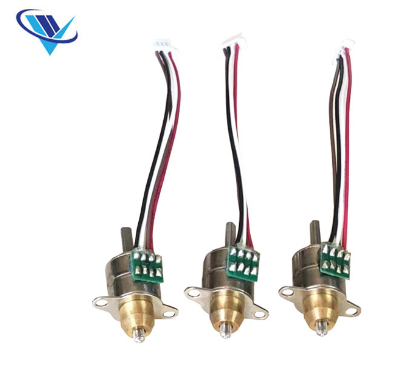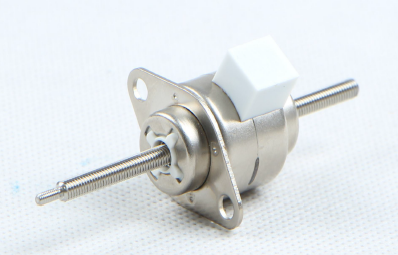
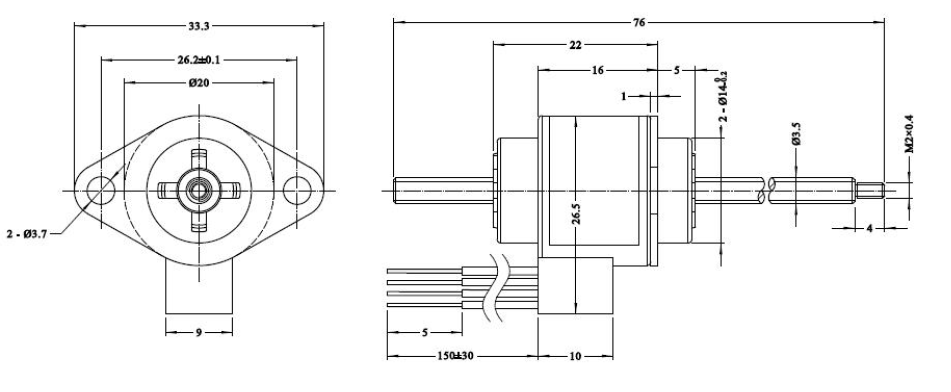
Kutalika kwa screw ndodo ndi 76, kutalika kwa injini ndi 22, ndipo sitiroko ndi pafupifupi kutalika kwa ndodo - kutalika kwa injini:
76-22 = 54mm
Kutalikitsa ndodo yomangira, sitirokoyo imatalika. Chiwombankhangacho chikakhala chachifupi, sitirokoyo imafupikitsa.
Kodi motayi imayenda nthawi yayitali bwanji? Ngati titalikitsa zokopa zowongolera, kodi ulendowo udzakhala wautali?
Kujambula kwa 10mm masitepe mota:
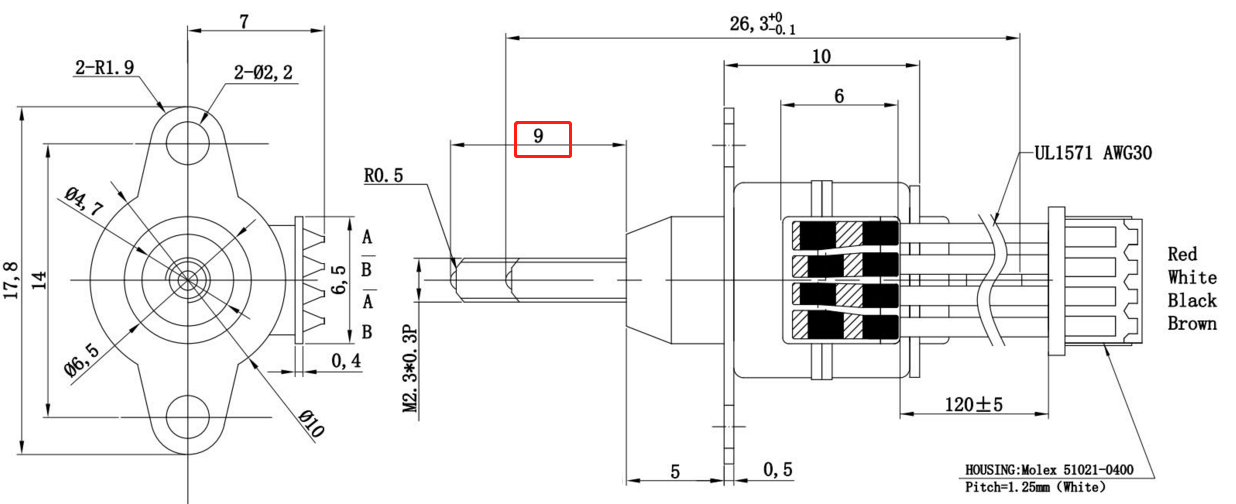
Kutalika kwake ndi 9 mm
Kapangidwe ndi kapangidwe ka 10mm masitepe mota
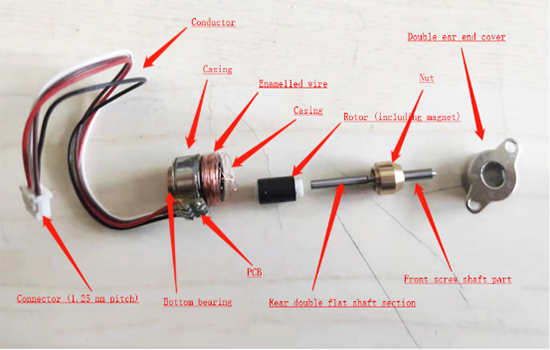
Mapangidwe a 10mm linear stepping motor (3D):
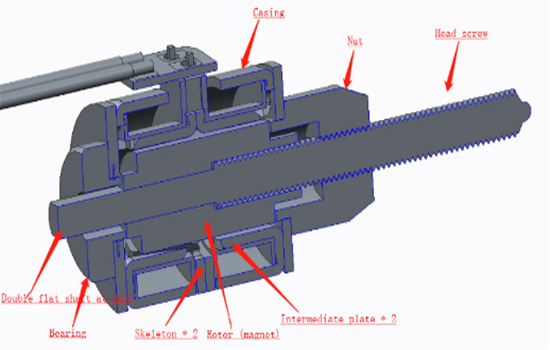
Kapangidwe kamangidwe ka10mm liniya poponda injini(Kuwonongeka kwa 3D):
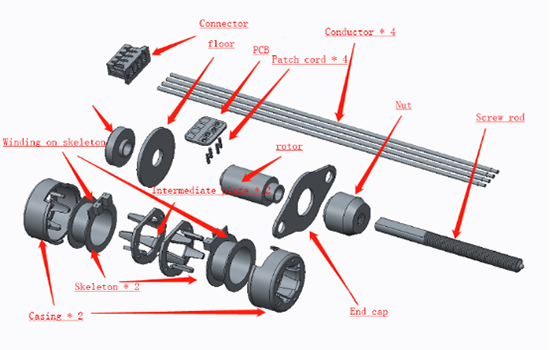
Mapangidwe a rotor:
Mbali imodzi ya rotor ndi yozungulira
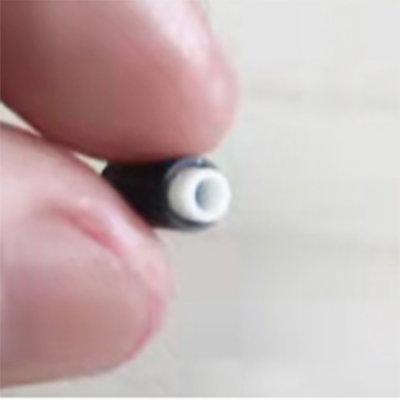
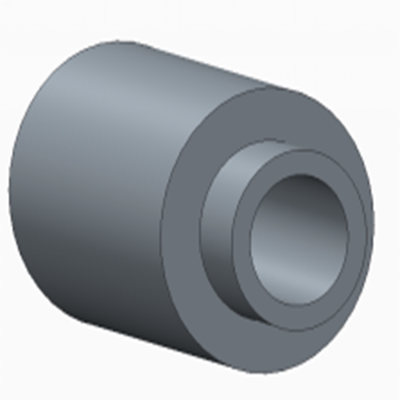
Mapeto ena a rotor ndi shaft iwiri
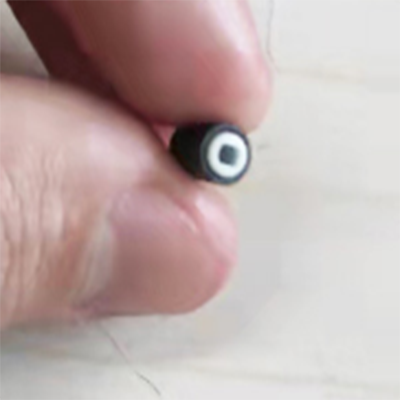
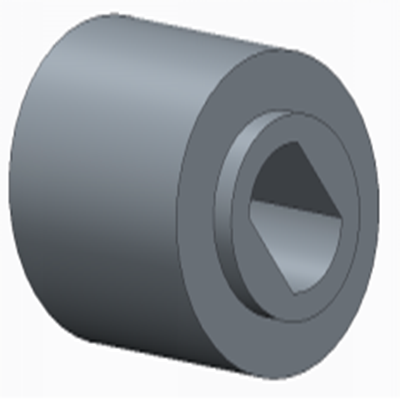
Kugwirizana kwa ma shaft awiri a lathyathyathya a rotor ndi screw rod.
M'kati mwa mtedza:
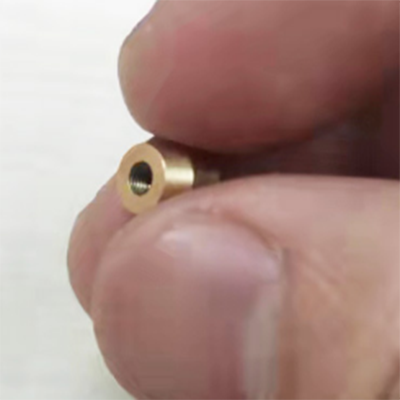
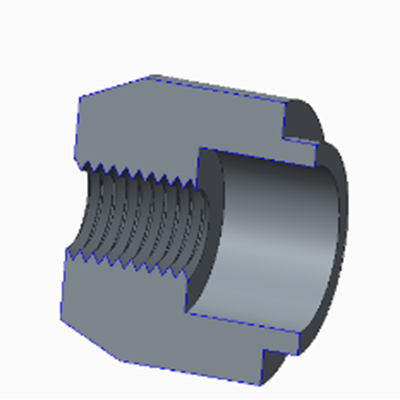
Mkati mwa nati: M’kati mwa mtedzawo muli ulusi womwe umafanana ndi ulusi wa screw rod.
Mtedza umatembenuza kuzungulira kwa screw rod kupita kutsogolo ndi kumbuyo (kuyenda mozungulira → kuyenda kwa mzere)
Kuwerengera kwa motor stroke: (kuyambira koyambira mpaka kumapeto)
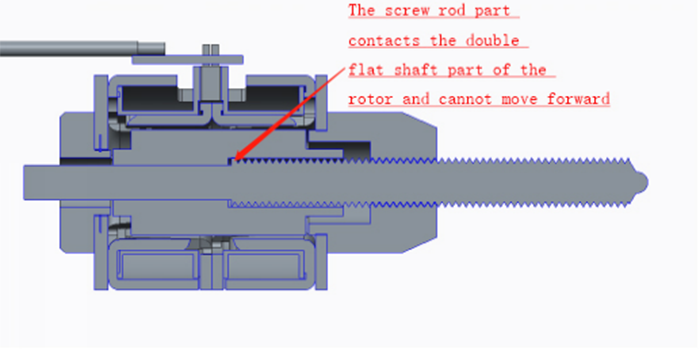
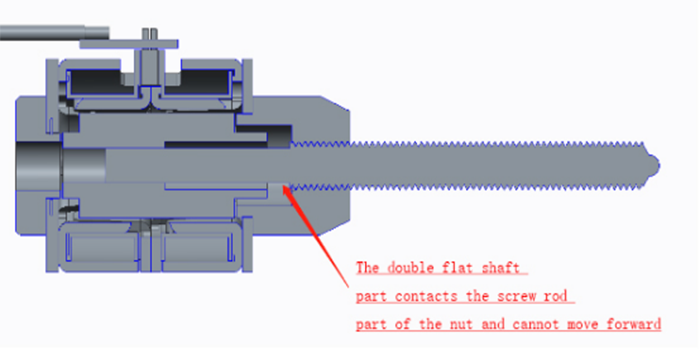
Sitiroko yamoto ndi njira yosuntha screw rod kuchoka ku A kupita ku B (9mm)
Chifukwa chake, kuchuluka kwa shuga m'magazi kumakhala:
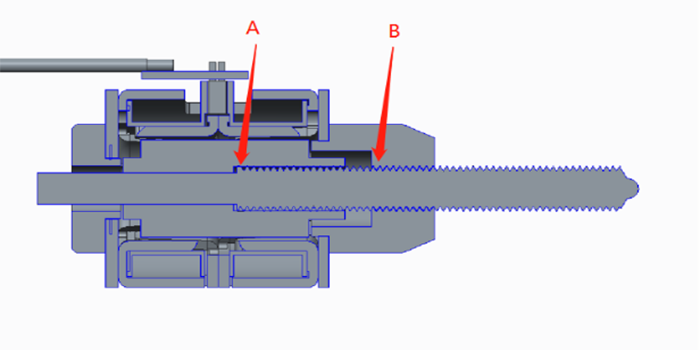
Mtunda wa screw ndodo kuchokera ku point A kupita ku point B (yotsimikiziridwa ndi kapangidwe ka mota, osati kutalika kwa screw ndodo)
Popeza ndizopanda phindu kukulitsa ndodo ya screw, momwe mungayendetsere kuyenda kwa mota iyi?
Yankho: Kwezani mtunda pakati pa shaft iwiri yosalala ndi mtedza. Ndiko kuti, mtedza wowonjezera, monga:
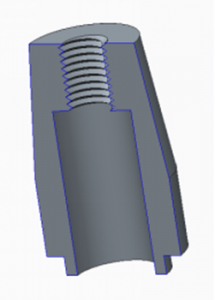
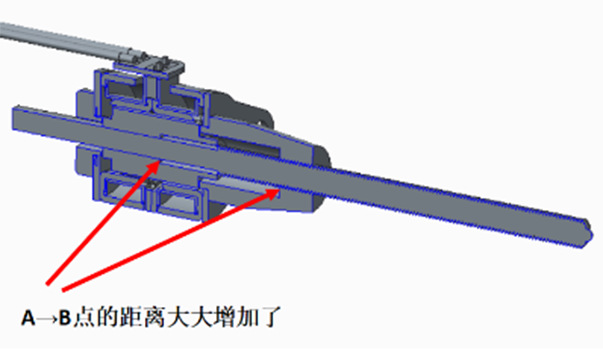
Kenako injiniyo idzakhala motere:
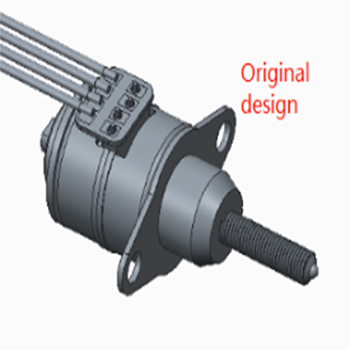
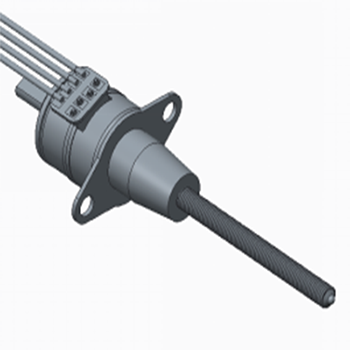
Mwanjira imeneyi, mtedzawo uyenera kukonzedwanso, ndipo chowotcha (chotalikitsa) chiyenera kukonzedwanso kuti chitalikike. Mtengo wake ndi wokwera kwambiri, choncho nthawi zambiri sizili choncho.
Njira ina yoganizira:
Pangani motalika.
Pakali pano, kutalika kwa injini ya 10mm ndi 10mm.
Choyikapo, kalasi yapakati ndi mafupa onse amalizidwa.
injini ikatalikitsidwa, zikutanthauza kuti casing+intermediate class+skeleton+rotor italikitsidwa palimodzi.
Mtengo wake ndiwokwera kwambiri !!!
Nthawi yotumiza: Nov-25-2022

